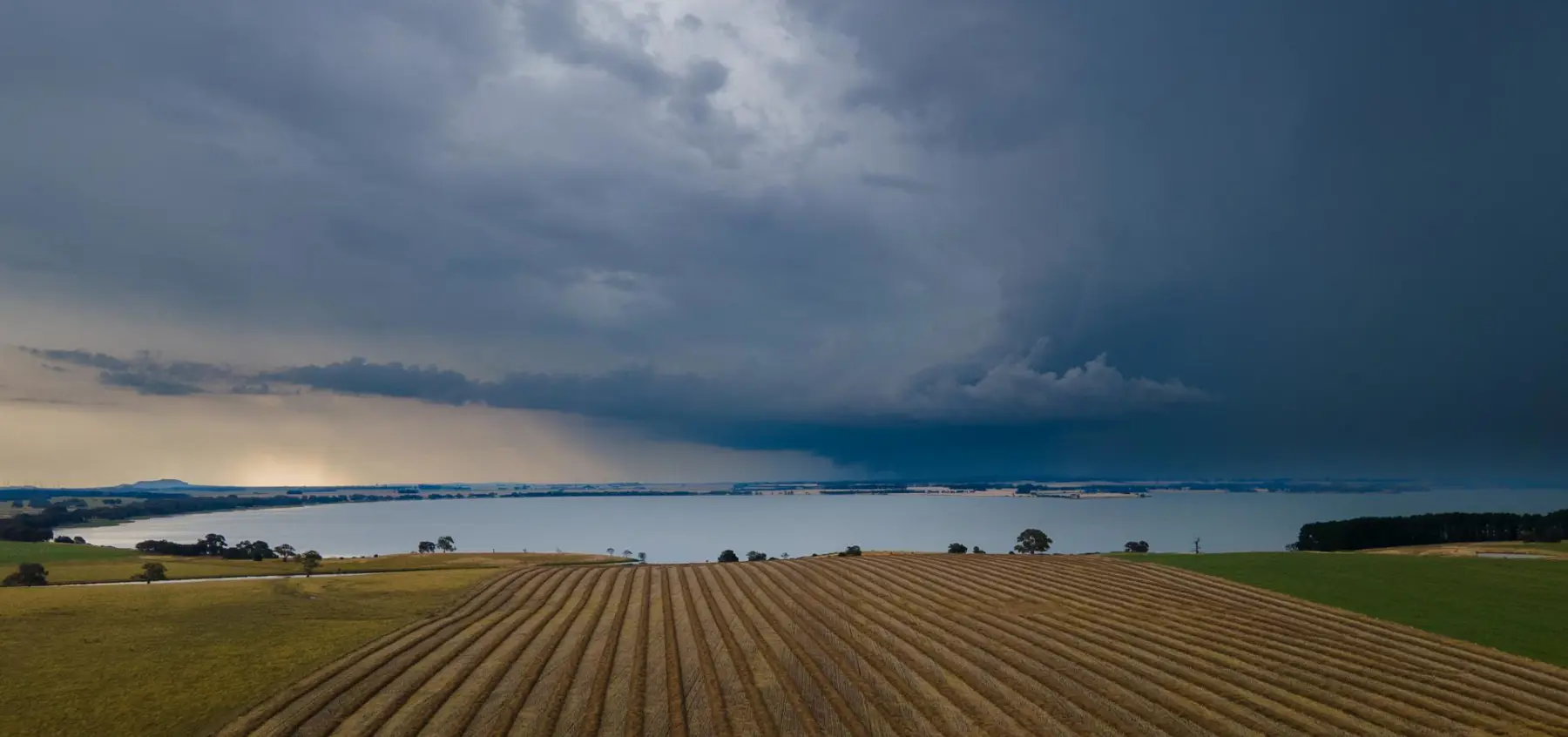New app helps farmers view rainfall distribution like never before

The tool will enable farmers to make more informed decisions, including with crop planning and irrigation strategies. Image: Emma Burnham
Federation University researchers have developed a tool that reveals spatial variations in rainfall over short distances, providing farmers with an unprecedented level of detail about rainfall on their properties.
Rainfall Mapper enables users to select tiles that are 500 by 500 metres for specific locations and time periods – allowing the tool to be used by farmers to gain greater insight into rainfall information specific to their property.
With increased access to information about past rainfall, the tool enables farmers to make more informed decisions, including crop planning and irrigation strategies.
Available to the public on a trial basis, Rainfall Mapper is a standalone, online application developed by the technical team from the Centre for eResearch and Digital Innovation (CeRDI) based on the initial work done by Dr Peter Weir during his Soil CRC PhD project.
The trial results will help improve the design of the tool to enhance the user experience, enabling the research team to gain a deeper understanding of the varied, practical applications of the tool. This will guide the research direction of optimising the practical value of Rainfall Mapper for different users.
The project was developed from Dr Weir's PhD research, which involved determining soil moisture content at the paddock level and investigating the spatial variation in rainfall within an area.
"It is an area measurement – not a point measurement from a single location and that means the app has the capability of picking up rainfall details of localised thunderstorms that often occur unmeasured between official Bureau of Meteorology gauges," Dr Weir said.
Regional rain gauges are sparsely located with an average distance of around 30-50 kilometres between these single-point measurements.
"We're very careful with our disclaimer because the rainfall amounts are dependent on the modelling of the weather radar signal to estimate the amount of rain that has fallen in that specific area, but the results are extremely interesting."
Rainfall Mapper uses data sourced from the official Bureau of Meteorology (BoM) rain gauge network from across Australia, merged with the BoM's weather radars to generate the Rainfields3 dataset, which is available online from the National Computing Infrastructure – Australia's premier provider of high-performance computing resources that supports research and collaboration across science, government, and industry.
It is currently available as a component within the Visualising Australasia's Soils (VAS) portal – a long-running Soil CRC initiative that brings together soils research, information and activities from across Australia and New Zealand.
CeRDI Principal Research Fellow Associate Professor Peter Dahlhaus, who supervised the project, says there are many potential applications for the Rainfall Mapper, including for anyone who wants information specific to their property.
"If you're a farmer and you want to seed your paddock, you would like to know how much rain you've had since the last harvest, and when and where the rain has fallen", Assoc Prof Dahlhaus said.
"It's farmers and farming groups that are currently showing interest in the app. Apart from the agricultural sector, I anticipate strong interest from people involved in catchment management and those living in high-rainfall areas. Biodiversity groups are also likely to find this tool valuable."
"The resolution is so much finer than any other tool that is available and rainfall patterns have shifted due to climate change. Instead of getting normal reliable winter rain, we're now getting more scattered intense rain events and scattered showers."
The tool relies on modelled data that converts reflectivity picked up by weather radar – often detected up to a kilometre off the ground – and converting that to rainfall. Assoc Prof Dahlhaus says the research is "shining a light in a dark corner" to show already available information in a user-friendly way.
Rainfall Mapper includes two years of data and allows users to select specific date parameters. The researchers demonstrated the concept at the Soil CRC conference in 2024 and say the interest that was generated was far beyond their expectations.
"Now we are going on to the next step, which is to convert this rainfall data into soil moisture at a finer resolution than we have been able to do so far," Assoc Prof Dahlhaus said.
"The important point is not just the rain that has fallen on a specified area – this is valuable information – but a lot more interest will come when people are able to say how much water is in the bucket."
Dr Weir's PhD research was supported by the Soil CRC with funding from the Australian Government.
